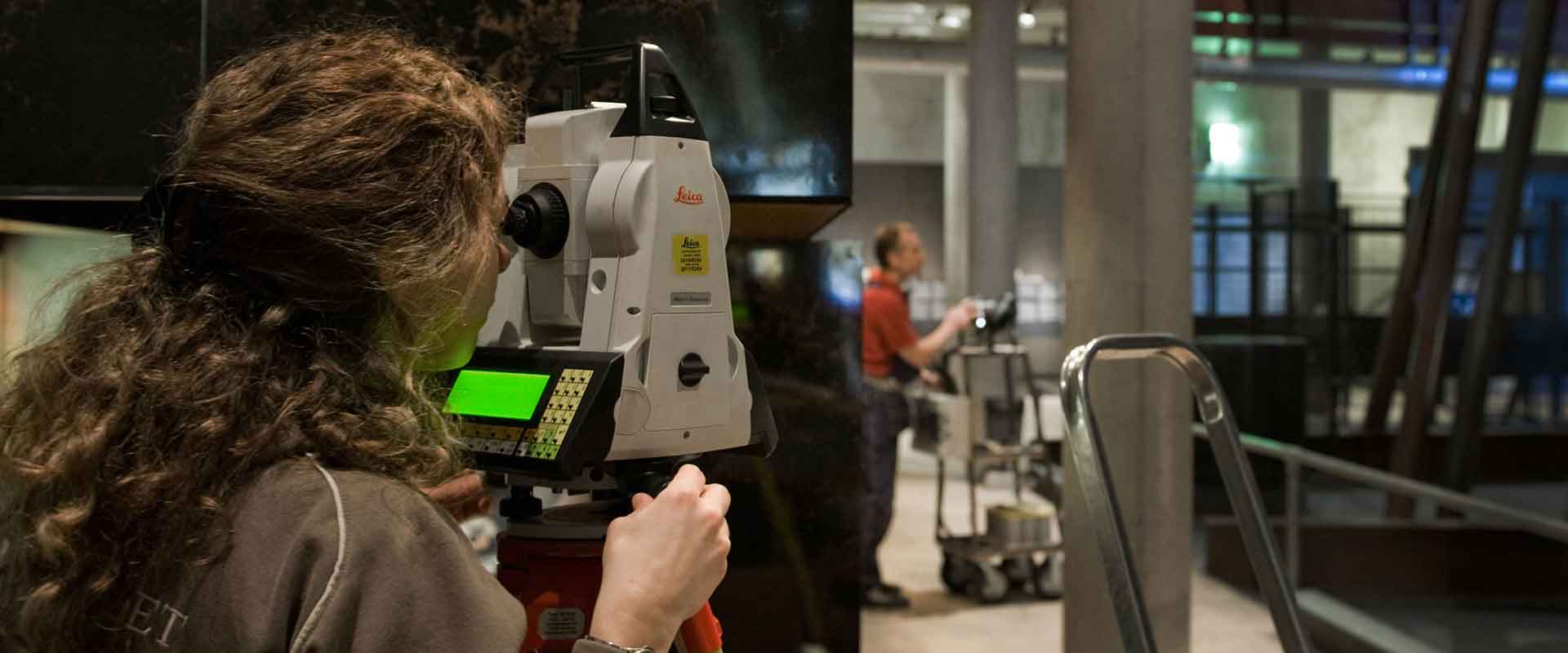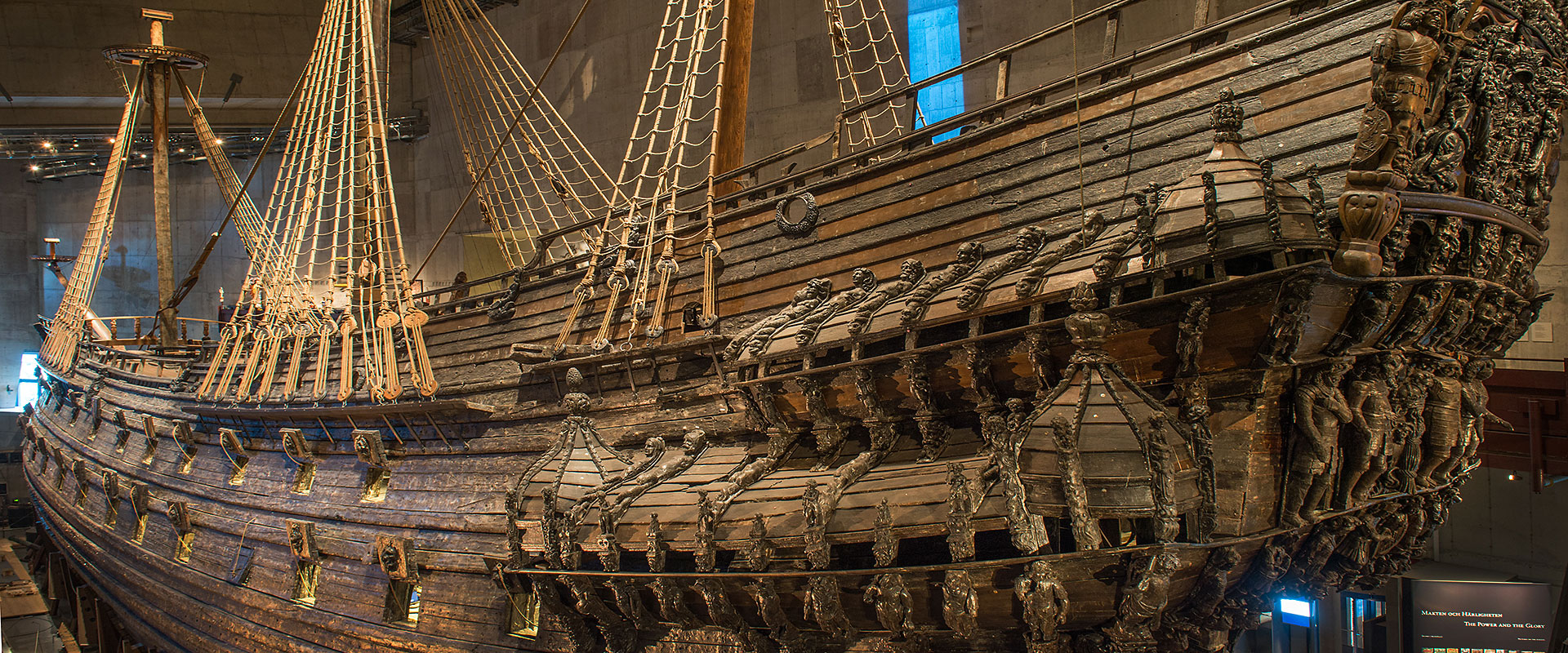By measuring 400 points on Vasa, it is possible to study the ship’s deformation over time. These so-called geodetic measurements have been taken twice a year since the year 2000, and take two people about two weeks to carry out.
Over time, Vasa changes shape. Partly this is because of shrinkage as the ship slowly dries out after the conservation treatment, and partly this is movement of the timbers relative to each other, a process of settling as the ship responds to small changes in the weight and loading of individual timbers.
These changes in shape, called deformation, are monitored in several ways. The simplest is to measure the changing weight of sample timbers or the distance between fixed points on the surfaces of individual timbers. To understand the larger scale of how the whole ship changes, the movement of 400 fixed points is measured on the hull relative to each other.
The geodetic measuring system is very accurate as it is possible to see movements of less than 1 mm. A total of 350 points are measured on the outside of the hull plus another 50 on the inside. The system was designed for the Vasa Museum in collaboration with the Royal Institute of Technology (KTH).
Displacement measurements
Displacement is measured by means of a total station, an instrument that measures angles and distances to various fixed points. The points consist of red reflective tape that is affixed to the ship, and prisms that are mounted as various points in the ship hall. Each target point on the hull is then measured two times each from at least two different sets of points. This increases the accuracy of the measurement and minimises the risk of measurement error.
After each measuring session, the data is analysed and compared with previous results, creating a clear picture of how the 400 points change over time. More than 20 years of measurements show that Vasa is settling downwards approximately 1 mm per year, but there is also some other local deformation.
Geodesy (from Latin geo = earth and desi = part) involves, for example, determining a point's position in a coordinate system.
Weakened wood
Interdisciplinary research shows that there is a clear link between the wood’s chemical status and its mechanical properties. Researchers have also calculated clear figures showing the strength of the timber. Current research on the specific properties of the ship is being used as the foundation of work to build a new support. A replica of a section of Vasa’s hull was built to further investigate the mechanical properties of wood and timber. The replica was loaded in a test rig to measure how stresses and forces are distributed where the different structural parts of the ship meet.
The wood is showing signs of chemical degradation in a number of places in the hull. There is also evidence that the wood has lost quite a bit of strength. On average, the ship’s ability to carry loads in these areas is decreased by 40 percent compared with fresh wood. In some places, this figure is as high as 80 percent. The figures clearly show the need to support Vasa in a better manner than is the case today.
In the research project “Support Vasa”, which was conducted 2012–2016, this work was carried out in partnership with and under the leadership of the Department of Applied Mechanics at Uppsala University. In 2017, the project entered its next phase, focusing on the design of an improved support system. In 2018, work began to design the new support structure. In 2024, work began to install the new support structure. The aim is for it to be complete by 2028, just in time for the ship’s 400th anniversary.
• Department of Applied Mechanics at Uppsala University external link
The research was funded by:
• Swedish Research Council (external link)
• Formas (external link)
• VINNOVA (external link)
For English subtitles : press " CC" and select " English".

